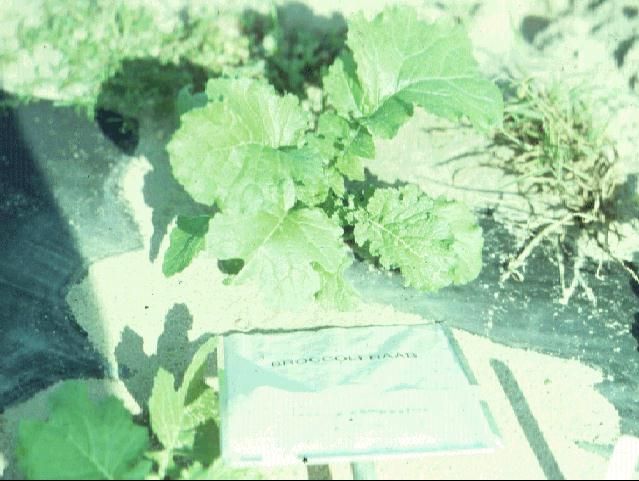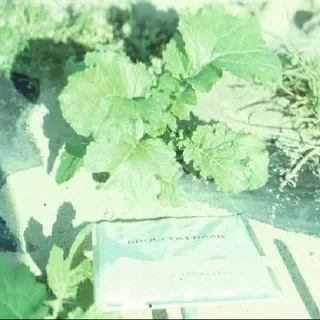Broccoli, Raab—Brassica rapa L. (Ruvo group)1
Broccoli raab is also known by such names as raab, rapa, rapini, broccoli turnip, spring broccoli, taitcat, Italian turnip, and Italian mustard.
Description
The plant is grown for its tender leaves and flower shoots, which are used as greens or potherbs. Plants, which resemble both turnip tops and broccoli, develop quite rapidly and are harvested before the flower buds open. Broccoli raab is seldom grown in Florida, even in home gardens. It is a popular vegetable crop grown extensively in the state of New Jersey. In the Gainesville, Florida, fall trials it was vigorous and productive.

Credit: James M. Stephens
Culture
Gardeners trying this vegetable should plant seeds in the fall, winter, or very early spring. If planted too late in the spring, the warm weather hastens the opening of the flower buds, signaling that the plants have passed their peak of quality.
Apparently there are two different major strains of broccoli raab. In New Jersey, one is planted in the fall so that some growth occurs before the plant goes into a wintering-over dormancy. Harvest of this strain occurs following regrowth of new shoots and flowers in the early spring.
The other strain is planted from seed in the spring. The earliest spring plantings require 60 days from seeding to harvest. Later, plantings mature in about 40 days. Try an Italian selection called 'Sessentina.' Seeds of the spring strain may be available through seed catalogs, while the fall strain is planted from seed saved by the growers.
Culture of broccoli raab in Florida is similar to the production of mustard and other greens. Seeds should be planted in rows spaced 12- to 24-inches apart, with an average of 12- to 15-plants per foot of row. Seeds may also be broadcast over the bed surface, with the bed made as wide as can be readily worked.
Harvesting and Use
Plants are ready for harvest when they reach a height of 10 to 15 inches. Cut the plants at the ground level or where the stem tissue ceases to be tough and becomes succulent. If the greens are to be sold, tie the leaves and flower stalks in bunches as is done with collard, mustard, and turnip. A second and third cutting may be obtained if conditions are ideal.
To prepare raab, blanch quickly in boiling water, drain, then saute briefly until tender in olive oil and minced garlic. It tastes similar to broccoli, yet a bit sharper (more "bite").



